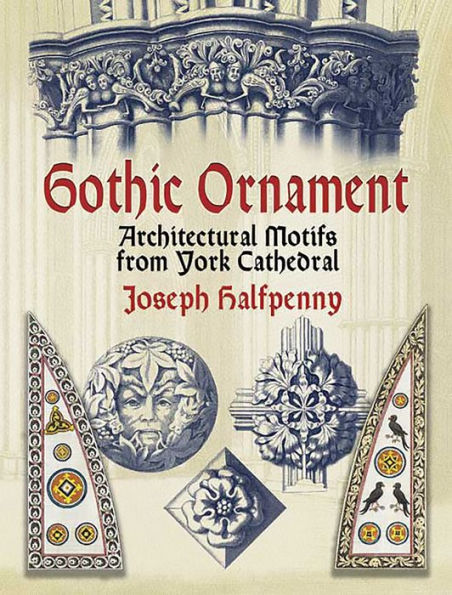Gothic Ornament: Architectural Motifs from York Cathedral
These royalty-free motifs feature exquisite specimens of the sculptured ornaments from northern Europe's largest medieval cathedral. The Cathedral and Metropolitical Church of St. Peter in York, popularly known as York Minster, was founded as a missionary church. Its soaring Gothic architecture and vast interior, parts of which date back to the 13th century, feature some of the best examples of the medieval craftsman's work to be found anywhere.
This compilation consists of 175 illustrations, selected from throughout the cathedral. Like the building of the church itself, the ornaments were executed during different eras. This collection, reproduced from a rare 18th-century volume, offers artists and graphic designers an unusual selection of authentic architectural motifs from the Middle Ages.
1111329025
This compilation consists of 175 illustrations, selected from throughout the cathedral. Like the building of the church itself, the ornaments were executed during different eras. This collection, reproduced from a rare 18th-century volume, offers artists and graphic designers an unusual selection of authentic architectural motifs from the Middle Ages.
Gothic Ornament: Architectural Motifs from York Cathedral
These royalty-free motifs feature exquisite specimens of the sculptured ornaments from northern Europe's largest medieval cathedral. The Cathedral and Metropolitical Church of St. Peter in York, popularly known as York Minster, was founded as a missionary church. Its soaring Gothic architecture and vast interior, parts of which date back to the 13th century, feature some of the best examples of the medieval craftsman's work to be found anywhere.
This compilation consists of 175 illustrations, selected from throughout the cathedral. Like the building of the church itself, the ornaments were executed during different eras. This collection, reproduced from a rare 18th-century volume, offers artists and graphic designers an unusual selection of authentic architectural motifs from the Middle Ages.
This compilation consists of 175 illustrations, selected from throughout the cathedral. Like the building of the church itself, the ornaments were executed during different eras. This collection, reproduced from a rare 18th-century volume, offers artists and graphic designers an unusual selection of authentic architectural motifs from the Middle Ages.
12.95
In Stock
5
1

Gothic Ornament: Architectural Motifs from York Cathedral
128
Gothic Ornament: Architectural Motifs from York Cathedral
128
12.95
In Stock

Product Details
| ISBN-13: | 9780486154008 |
|---|---|
| Publisher: | Dover Publications |
| Publication date: | 12/03/2012 |
| Series: | Dover Pictorial Archive |
| Sold by: | Barnes & Noble |
| Format: | eBook |
| Pages: | 128 |
| File size: | 33 MB |
| Note: | This product may take a few minutes to download. |
From the B&N Reads Blog
